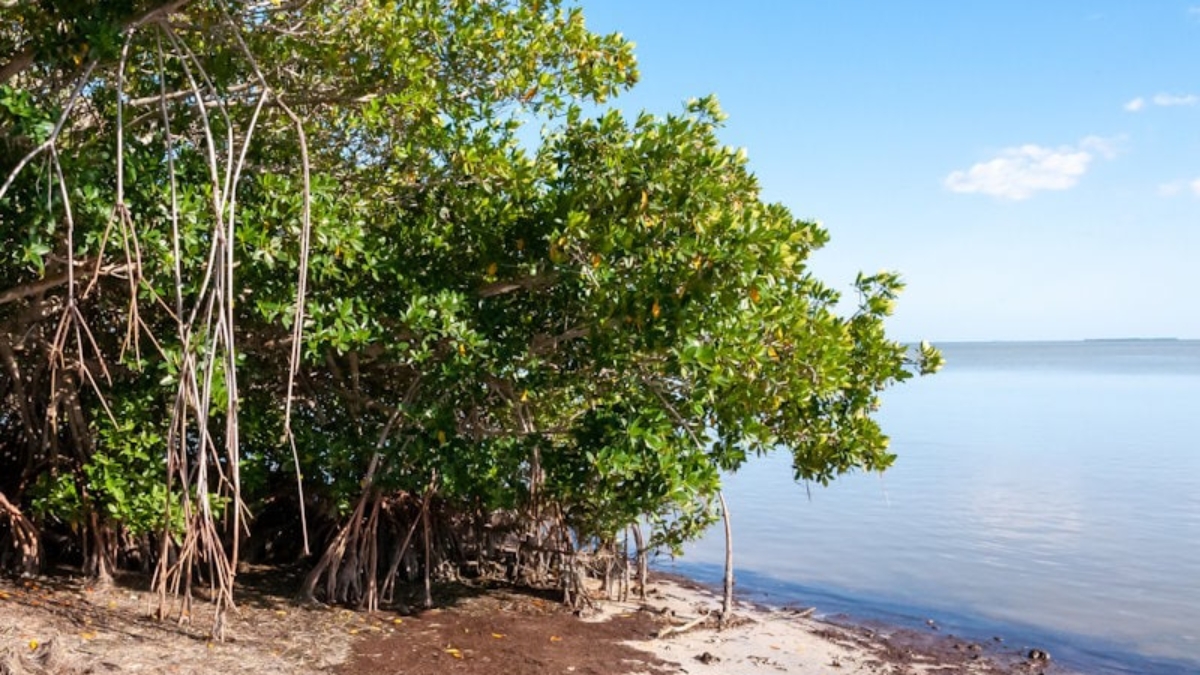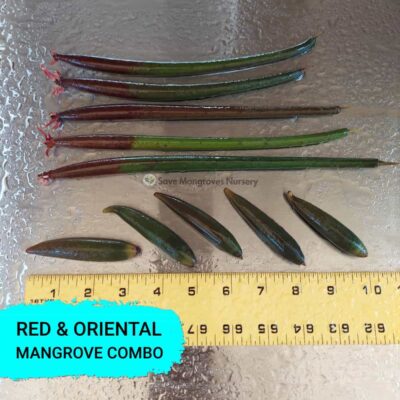Mangroves are an incredible addition to any aquarium, offering not only aesthetic beauty but also a range of practical benefits for your aquatic environment. If you’ve ever admired the lush, green coastlines where mangroves thrive, you’ll be pleased to know that you can bring a piece of that natural wonder into your own home aquarium. This guide will walk you through how to introduce and care for mangroves, ensuring they flourish and enhance your aquatic setup.
Why Choose Mangroves for Your Aquarium?
Mangroves are more than just a pretty plant. They are a powerhouse of benefits for your aquarium, helping to filter water, stabilize substrates, and provide a natural habitat for fish and invertebrates.
Natural Filtration for Cleaner Water
One of the most remarkable aspects of mangroves is their ability to act as natural filters. They absorb excess nutrients like nitrates and phosphates from the water, helping to prevent the dreaded algae bloom. As an aquarium enthusiast, I’ve found that adding mangroves to my tanks has made a noticeable difference in water clarity and overall health of my aquatic life.
Good ✅: Mangroves help maintain clean, clear water by absorbing harmful nutrients.
Bad ❌: Without proper care, mangroves can become nutrient-deficient and may not thrive, so regular monitoring is essential.
Stabilizing Substrates and Reducing Erosion
Mangroves are known for their complex root systems, which are highly effective at stabilizing substrates. This is especially beneficial if you have an aquarium with a sand or gravel bottom, as the roots can help prevent erosion and keep your substrate in place.
Mangrove Fact 🛑: Mangroves can thrive in a variety of substrates, from sandy bottoms to more rocky terrains, making them incredibly versatile for different aquarium setups.
Creating a Natural Habitat for Fish and Invertebrates
Mangroves offer an ideal habitat for many types of fish and invertebrates, providing shelter and breeding grounds. In my experience, fish seem to be more at ease and display more natural behaviors when they have mangroves to explore and hide among. Shrimp, crabs, and snails also benefit from the added complexity and protection that mangroves offer.
Good ✅: Mangroves create a natural, stress-free environment for your aquarium inhabitants.
Bad ❌: Mangroves need plenty of light to grow, so be prepared to invest in proper lighting to keep them healthy.
How to Introduce Mangroves to Your Aquarium
Now that you’re convinced of the benefits, let’s talk about how to successfully introduce mangroves to your aquarium.
Step 1: Choose the Right Mangrove Species
Red Mangroves (Rhizophora mangle) are the most popular choice for aquariums due to their hardiness and adaptability. They can thrive in saltwater, freshwater, and brackish environments, making them a versatile option for various tank setups.
Mangrove Fact 🛑: Red Mangroves are commonly found in coastal regions around the world and are known for their distinctive prop roots, which help them anchor in unstable substrates.
Step 2: Prepare Your Aquarium
Before adding mangroves your aquarium, ensure your tank has the proper setup. Mangroves require a stable substrate to root into, adequate water flow, and sufficient lighting. If you’re adding them to an existing tank, make sure to acclimate them slowly to avoid shocking the plant.
Good ✅: Use a fine-grain substrate that allows the mangrove roots to penetrate easily.
Bad ❌: Avoid adding mangroves to tanks with poor water flow, as this can lead to stagnation and poor plant health.
Step 3: Planting and Positioning
Once your tank is ready, it’s time to plant your mangroves. Place the propagules (young mangrove plants) in the substrate, ensuring that the roots are buried but the upper part of the plant is exposed to light. Position them where they will receive plenty of light and have room to grow.
Mangrove Fact 🛑: Mangroves can grow up to several feet tall in an aquarium if given the right conditions, so make sure they have space to expand!
Step 4: Maintaining Optimal Conditions
To keep your mangroves healthy, monitor the water conditions closely. They prefer a slightly alkaline pH and consistent salinity if in a brackish or saltwater tank. Regularly check for nutrient deficiencies, which can be supplemented with appropriate fertilizers if needed.
Good ✅: Mangroves are relatively low-maintenance once established, requiring only regular light and nutrient checks.
Bad ❌: Neglecting water quality can lead to poor mangrove health, affecting their ability to filter water and stabilize the substrate.
Lighting Requirements: LED vs. Fluorescent
When it comes to lighting, mangroves need plenty of it! Both LED and fluorescent lights can work, but each has its pros and cons.
LED Lighting
Good ✅: Energy-efficient, customizable spectrum, longer lifespan.
Bad ❌: Higher initial cost, may require adjustments to avoid overheating.
Fluorescent Lighting
Good ✅: Lower upfront cost, proven effectiveness for plant growth.
Bad ❌: Shorter lifespan, higher energy consumption, can produce more heat.
Mangrove Fact 🛑: Mangroves require about 8-12 hours of light per day to thrive. Position your lights accordingly to ensure they get enough exposure.
Common Mistakes to Avoid
Even with the best intentions, mistakes can happen. Here are some common pitfalls to avoid when caring for mangroves in your aquarium:
- Overcrowding: Give your mangroves enough space to grow. Overcrowding can lead to poor light penetration and competition for nutrients.
- Inadequate Lighting: Mangroves need strong lighting to photosynthesize effectively. Invest in a good lighting system to support their growth.
- Neglecting Water Quality: Regularly check the water parameters to ensure they remain within the optimal range for mangroves.
Conclusion: The Coastal Touch Your Aquarium Needs
Bringing the coast to your aquarium with mangroves is a rewarding experience. Not only do they enhance the beauty of your tank, but they also contribute to a healthier, more stable environment for your aquatic life. Whether you’re a seasoned aquarist or just starting out, mangroves are a fantastic addition to any setup.
At Save Mangroves Nursery, we offer healthy, live Red Mangrove Plants that are ready to add to and naturally filter your Saltwater, Freshwater, or Brackish Aquarium tanks. We ship out to all 50 states daily, ensuring that you can enjoy the incredible benefits of mangroves no matter where you are.
Ready to transform your aquarium? Visit us at Save Mangroves Nursery and bring the coast to your home today!
Best seller products
-
18”-24” Red Mangroves With Roots & 2-4 Leaves
Price range: $34.99 through $87.99 -
28″ Red Mangrove Tree – Fully Mature Plant
Price range: $0.00 through $230.00 -
10”-14” Red Mangroves With Roots & 2-4 Leaves
Price range: $19.99 through $47.99 -
30″ Red Mangrove Tree – Fully Mature Plant
Price range: $0.00 through $180.00 -
Red & Oriental Mangrove Combo Bundle
Price range: $29.99 through $44.99 -
[RARE] Orange Oriental Mangroves Propagule Seeds
Price range: $19.99 through $79.99
 Cart is empty
Cart is empty 






![[RARE] Orange Oriental Mangroves Propagule Seeds](https://savemangroves.com/wp-content/uploads/2025/07/Oriental-Mangrove-Seeds-Save-Mangroves-Nursery-400x400.jpg)

Add a Comment
You must be logged in to post a comment